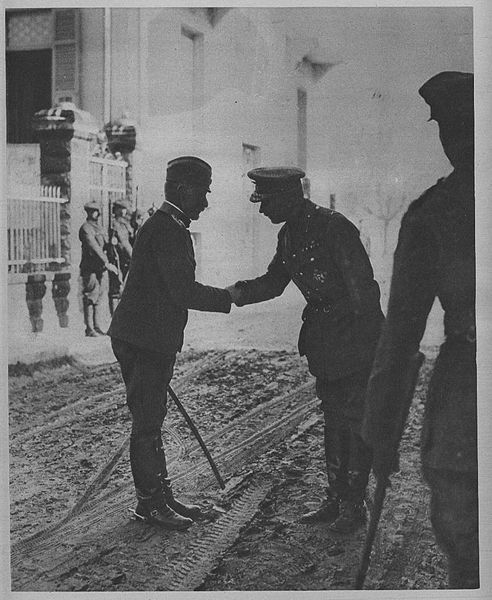Allied Army of the Orient
The Allied Army of the Orient (AAO) was the name of the unified command over the multi-national allied armed forces on the Salonika front during the First World War.
Allied collaboration: an Italian captain, a Russian lieutenant, a Serb colonel, a French lieutenant, and a Greek gendarme
Serbian Field Marshal Živojin Mišić and British General George Milne
Sarrail and Petitti di Roreto on the arrival of the Italian troops in Salonika
General Gérôme and Venizelos inspect Greek troops in Macedonia
The Macedonian front, also known as the Salonica front, was a military theatre of World War I formed as a result of an attempt by the Allied Powers to aid Serbia, in the autumn of 1915, against the combined attack of Germany, Austria-Hungary and Bulgaria. The expedition came too late and with insufficient force to prevent the fall of Serbia and was complicated by the internal political crisis in Greece. Eventually, a stable front was established, running from the Albanian Adriatic coast to the Struma River, pitting a multinational Allied force against the Bulgarian army, which was at various times bolstered with smaller units from the other Central Powers. The Macedonian front remained stable, despite local actions, until the Allied offensive in September 1918 resulted in Bulgaria capitulating and the liberation of Serbia.
From left to right: Allied soldiers from Indochina, France, Senegal, Great Britain, Russia, Italy, Serbia, Greece, and India.
A propaganda postcard commemorating the victory of the Central Powers over Serbia in 1915.
The retreat of the Serbian troops in winter 1915/16 across a snowy mountain in Albania to Adriatic coast.
A dead Serbian soldier in the snow.








